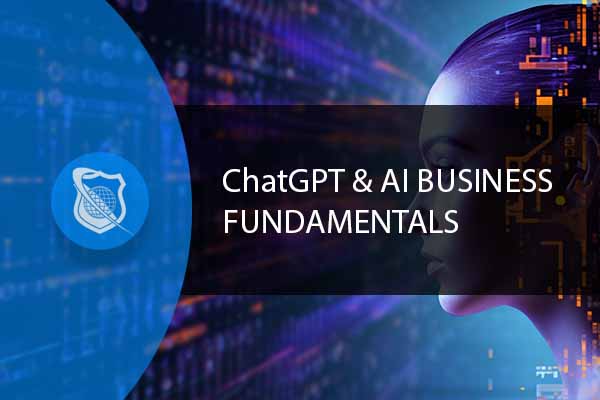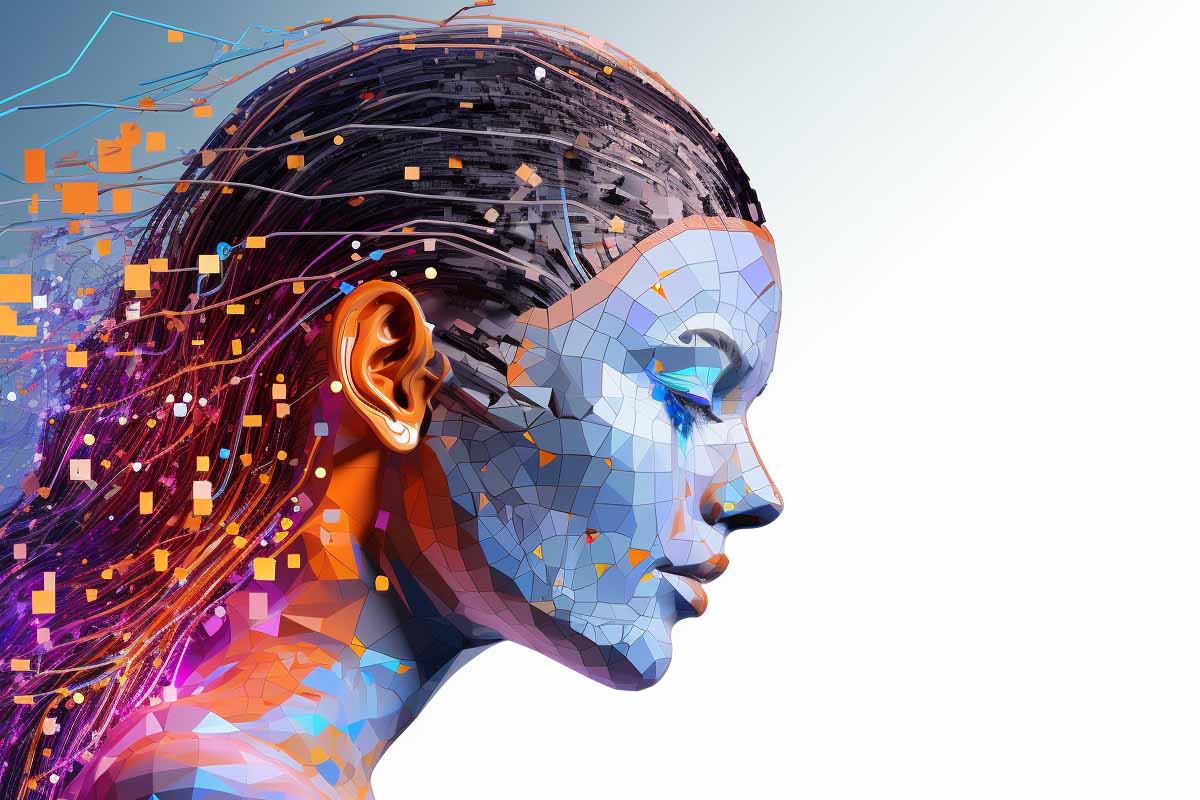There’s a technological symbiosis unfolding in our era, a revolution led by the intertwining of information technology and artificial intelligence. In my 20 years as an IT professional, I’ve seen this dynamic duo evolve from a promising concept into a force that’s reshaping our digital world.
Overview of Information Technology and Artificial Intelligence
As we journey further into the digital age, few technological advancements hold as much transformative potential as Artificial Intelligence (AI). It’s not just a buzzword; AI is actively reshaping how we live, work, and interact with the world. Its impact echoes across multiple industries, automating repetitive tasks, performing complex decision-making, and offering insights beyond human cognitive capabilities.
From healthcare and finance to transportation and education, the deployment of AI technologies is becoming the norm rather than the exception. In this context, we delve into how AI, such as ChatGPT is influencing the landscape of IT and technology and altering the operational dynamics of businesses worldwide.

ChatGPT Training
Want to unlock the secrets of conversational AI? Discover our exclusive ChatGPT course! Understand information technology and artificial intelligence that’s revolutionizing the way we communicate. Perfect for tech enthusiasts, budding AI developers, or curious minds looking to stay ahead of the digital curve. Enroll today and embark on your AI journey with us!
At its core, Artificial Intelligence denotes the capability of machines to mimic human intelligence. This is achieved through a combination of intricate algorithms and statistical models, which empower systems to learn from data, discern patterns, and make informed decisions. Although AI concepts have been around for quite some time, recent breakthroughs in machine learning and deep learning have expedited its widespread adoption.
Whether it’s image and speech recognition, natural language processing, or self-driving technologies, AI is at the helm of numerous contemporary applications. By transforming the way businesses function and engage with customers, AI has become a catalyst for enhanced efficiency, precision, and user experience.
Lucas Mearian, a senior reporter, encapsulates the pervasive influence of information technology and artificial intelligence, stating, “AI is the technological zeitgeist of our era. It’s not just influencing IT and technology sectors, but it’s weaving itself into the fabric of every industry. Its potential to revolutionize processes, increase efficiency, and enhance customer experiences is what makes AI an indispensable tool in today’s digital world.”
Looking back to the late 90s and early 2000s, the landscape of IT was primarily defined by hardware and software. We were mastering databases, managing servers, and developing applications. However, as the years passed, I noticed an undercurrent that would eventually surge into a wave of transformation: the advent of artificial intelligence.
Case Study: Using AI in Database Management – A Real-World Example
In my 20-year journey as an IT professional, there have been several instances where information technology and artificial intelligence overlapped and AI has proven invaluable, especially in the realm of database management. One such project I was involved with was for a major online retailer, whose expansive database contained information on millions of customers.
Traditionally, managing such a large volume of data would involve countless hours of manual sorting and analysis, making it a time-consuming and challenging endeavor. However, our team decided to leverage the power of artificial intelligence to transform this daunting task into a streamlined, efficient process.
We used machine learning algorithms to sift through the database, analyzing purchasing patterns, browsing habits, and customer reviews. What would have taken weeks of manual labor was accomplished in a matter of minutes. The AI system didn’t just stop at raw analysis. It took a step further by providing us with actionable insights, suggesting which products were likely to be popular with different customer segments and at what times of the year.
The results were nothing short of groundbreaking. We saw a marked improvement in sales forecasts and inventory management. The sales team could anticipate demand trends, allowing the company to optimize its stock levels and reduce overhead costs.
To add an industry perspective, Julia Lewis, VP of Data and Analytics at a leading tech company, echoes the power of information technology and artificial intelligence in database management, “Artificial intelligence has revolutionized how we handle data. It’s not just about managing information anymore. It’s about harnessing that information, making it work for us in ways that were unimaginable a decade ago.”
Another example comes from Tom Patterson, a Chief Trust Officer for a global cybersecurity company, who highlighted the importance of information technology and artificial intelligence in managing security-related databases. He stated, “AI enables us to not only manage huge volumes of data but to parse that data for patterns that help us anticipate and mitigate security risks. It’s like having a thousand expert analysts working around the clock.”
As these real-world experiences show, the combination of information technology and artificial intelligence can truly revolutionize processes and outcomes. Harnessing AI for database management not only increases efficiency but also provides deeper insights and strategic foresight, leading to better business decisions. The integration of AI in IT isn’t just about making our jobs easier; it’s about unlocking possibilities we never knew existed.
Advance Your IT Career
with ITU Online's LIFETIME Training
Unlock the full potential of your IT career with ITU Online’s comprehensive online LIFETIME Training Library. Our expert-led courses will help you stay ahead of the curve in today’s fast-paced tech industry.
A Game-Changing Partnership: The Integration of IT and AI
In the early years of my career, the bulk of IT work was primarily focused on managing databases, configuring servers, development and programming software, and troubleshooting hardware issues. The advent of artificial intelligence, however, signaled the beginning of a significant shift in the industry. The convergence of information technology and artificial intelligence sparked a game-changing partnership, revolutionizing how we approach problem-solving in IT.
One of the most profound impacts of this union has been the move from manual data handling to automation. With AI’s machine learning algorithms, I found myself transitioning from traditional IT roles to more strategic and innovative positions. I was no longer just storing and retrieving data; I was using the data to ‘train’ machine learning models, making the software smarter and more efficient.
The introduction of AI into IT has been akin to gaining a highly intelligent, tireless assistant capable of learning on the job. Tasks that once took days to complete can now be done in minutes. For example, an AI-powered IT system can automatically categorize and tag thousands of customer queries, route them to the appropriate departments, and even suggest potential solutions based on past data – a tru integration of information technology and artificial intelligence.
Another pivotal transformation is the predictive capability brought in by AI. It has enabled us to anticipate IT issues even before they occur. Machine learning models, trained on large amounts of historical data, can predict system failures or cybersecurity threats, thus allowing us to be proactive rather than reactive.
Furthermore, information technology and artificial intelligence has helped streamline the software development process. It’s been incredible to see AI tools automatically generate and test code, identify bugs, and even propose fixes. AI has made IT systems more robust, scalable, and efficient, fundamentally changing how we design and build technology.
One of the most fascinating projects I worked on involved using machine learning algorithms to optimize network administration performance. We trained the algorithm on years of network data, teaching it to recognize patterns and correlate different factors affecting performance. The results were astounding. The system could predict network congestions and automatically adjust parameters to mitigate them. This level of automation and efficiency was unheard of a decade ago.
In summary, the partnership between information technology and artificial intelligence has reshaped the IT landscape, driving innovation, efficiency, and predictive capabilities. It has allowed us to work smarter by automating routine tasks, identifying patterns in large data sets, predicting system behaviors, and even improving software development processes. This evolution of IT, brought about by the integration of AI, is an exciting journey that continues to unfold with promising prospects.
Take Your Cybersecurity Skills to the Maximum Level
The Heart of Digital Innovation: Information Technology and Artificial Intelligence
Today, we stand at the frontier of a new era where information technology and artificial intelligence are not just tools, but the driving forces behind digital innovation. It’s a partnership that extends beyond software and algorithms, reshaping the fabric of our everyday lives and redefining the future of a multitude of industries.
Take, for instance, virtual assistants like Amazon’s Alexa or Apple’s Siri. These AI-powered tools leverage advanced natural language processing, a branch of artificial intelligence, to understand, respond to, and even anticipate human speech. What was once a complex IT challenge—making a machine understand human language—has now become a commonplace phenomenon thanks to AI.
Consider the recommendation engines on platforms like Netflix or Spotify. At their core, these systems use machine learning algorithms to analyze user behavior and preferences, dynamically adjusting to individual tastes. They showcase the prowess of AI to handle massive data sets and draw meaningful, personalized insights. It’s a perfect example of how the marriage of IT infrastructure and AI can enhance user experience on a large scale.
Another profound example is in the field of industrial maintenance. Predictive maintenance powered by AI can analyze data from machine sensors to predict potential failures, significantly reducing downtime. Companies like Siemens and General Electric have adopted AI-powered predictive maintenance, saving millions of dollars annually in prevented breakdowns.
The healthcare sector has also witnessed the revolutionary impact of IT and AI. Machine learning algorithms are now capable of analyzing medical images, detecting anomalies, and even predicting certain health risks. It has led to faster diagnoses and more personalized treatment plans, ultimately improving patient outcomes.
There’s also the financial industry, which has seen a transformation with the advent of robo-advisors. These AI-powered tools use algorithms to provide financial advice and portfolio management with minimal human intervention, making financial planning accessible to a larger population.
As Todd Lohr, Principal, Technology Enablement & Automation at KPMG says, “The integration of information technology and artificial intelligence is a catalyst for innovation and transformation. It’s not just a marriage; it’s an evolution towards a future where AI drives decision making, enhances customer experiences, and optimizes operations.”
In essence, the fusion of information technology and artificial intelligence is fueling a revolution in digital innovation. It’s not a fleeting trend but a significant paradigm shift that’s shaping the future across industries. This is why the comprehension and application of IT and AI are critical skills for any professional looking to thrive in this digital age.
The Future of IT: Confluence of AI and IT
As we look towards the future of Information Technology, it’s clear that AI is no longer a peripheral element, but a central, transformative force shaping the IT landscape. From enhancing business processes to propelling groundbreaking innovations, the amalgamation of IT and AI is redefining problem-solving methodologies and creating possibilities beyond our imagination.
Consider the advent of autonomous vehicles, a tangible result of the IT and AI confluence. On the surface, it may appear to be a triumph of mechanical engineering. However, at its core, it is a testament to the power of AI algorithms and sophisticated IT infrastructures. These vehicles rely heavily on AI for image recognition and decision-making, while IT provides the necessary data management and communication frameworks. The end result is a safer, more efficient, and potentially transformative mode of transport that was science fiction not too long ago.
Similarly, precision medicine is another area where the confluence of IT and AI is leaving its mark. Machine learning algorithms can analyze vast amounts of patient data to identify patterns that may escape even the most experienced physicians. These insights, combined with a robust IT infrastructure, enable targeted treatments tailored to individual patients, thereby improving healthcare outcomes while potentially reducing costs.
In my own professional journey, I’ve witnessed first-hand how this integration can revolutionize business operations. A key example is the implementation of AI-driven predictive analytics. By harnessing AI’s data-crunching abilities, businesses can foresee market trends, efficiently allocate resources, and enhance customer satisfaction.
To illustrate, I worked with a retail client that struggled with inventory management and missed sales opportunities due to unpredictable customer behavior. Implementing a predictive analytics model, we were able to analyze the historical sales data and customer trends, resulting in a far more accurate prediction of demand. Consequently, the business could optimize inventory levels, reduce waste, and increase sales – all hallmarks of improved operational efficiency.
Reflecting on the transformative power of AI in IT, Priya Anand, a technology reporter, commented, “AI is the new electricity for the IT field. It’s not just about automating processes anymore. It’s about amplifying human intelligence, making us capable of tackling problems we couldn’t solve before. The blend of AI and IT is truly redefining our future.”
In essence, the convergence of information technology and artificial intelligence is not just shaping the future of IT; it’s fundamentally altering how we solve problems and innovate. As we move forward, understanding and harnessing this integration will be key to driving progress across all sectors.
Preparing for the Future: Skills for the Next Digital Revolution
IT professionals must equip themselves with the skills and knowledge to ride this wave. They need to understand not only the intricacies of data management and software development but also the principles of machine learning and AI. This is where platforms like ITU Online become invaluable, providing comprehensive courses on information technology and artificial intelligence.
Advance Your IT Career
with ITU Online's LIFETIME Training
Unlock the full potential of your IT career with ITU Online’s comprehensive online LIFETIME Training Library. Our expert-led courses will help you stay ahead of the curve in today’s fast-paced tech industry.
Conclusion: Embracing the IT-AI Revolution
We find ourselves on the brink of a digital revolution where information technology and artificial intelligence are not merely instruments but the architects of our future. With my two-decade-long voyage in the IT realm, I can confidently declare that navigating this intersection of IT and AI is crucial to remaining at the forefront of this dynamic landscape.
Just as steam power once revolutionized industries and microprocessors ushered in an era of personal computing, today’s revolution is driven by the synergy between IT and AI. This fusion is transforming every sector, from healthcare and education to transport and entertainment, and even reshaping the social, economic, and cultural facets of our lives.
So, whether you’re setting foot into the realm of IT, or you’re a seasoned professional, embracing the confluence of IT and AI is indispensable. It’s not merely about riding the wave of digital transformation, but about steering it, harnessing its energy, and shaping its direction. As IT professionals, we have the tools and the opportunity to leverage this powerful symbiosis, creating solutions that are more efficient, effective, and aligned with the changing demands of society.
Dr. Fei-Fei Li, a pioneer in AI and a professor at Stanford University, sums it up aptly when she says, “Artificial Intelligence is the electricity of the 21st century, and IT is the grid that enables it. Together, they are more than the sum of their parts. They are a revolution that is redefining our world.”
In conclusion, the future belongs to those who are adept at merging the power of information technology and artificial intelligence. Therefore, mastering the intricacies of both is not a mere option for those in the IT sector—it is a fundamental requirement. The digital future beckons, and it is upon us to rise to the challenge, seize the opportunities, and shape a future that reflects the best of both IT and AI.
Frequently Asked Questions :
What is the role of Information Technology and Artificial Intelligence in the digital revolution?
Information Technology (IT) and Artificial Intelligence (AI) are at the heart of the next digital revolution, transforming industries by enhancing efficiency, innovation, and creating new opportunities. IT provides the infrastructure and platforms necessary for AI algorithms to operate, while AI brings intelligence that can analyze data, automate processes, and predict outcomes, leading to more informed decision-making and innovation.
How can businesses leverage AI and IT for growth in the digital era?
Businesses can harness the power of AI and IT by implementing smart automation, data analytics, and customer engagement solutions. By integrating AI into their IT infrastructure, companies can optimize operations, personalize customer experiences, and develop new products or services, thereby driving growth and staying competitive in the digital marketplace.
What are the challenges of integrating AI into existing IT systems?
Integrating AI into existing IT systems poses challenges such as compatibility, data privacy, and security concerns. Ensuring that AI algorithms work seamlessly with legacy systems requires careful planning, skillful implementation, and ongoing management. Additionally, businesses must address ethical considerations and regulatory compliance related to AI use, ensuring data is used responsibly and securely.
What future trends in AI and IT should we be aware of?
Emerging trends include the rise of quantum computing, which will vastly increase computing power for AI applications; the expansion of edge computing, allowing AI processing to be done closer to where data is collected; and advancements in natural language processing (NLP) and machine learning algorithms, making AI more intuitive and effective. Staying informed about these trends is crucial for leveraging the full potential of AI and IT in the digital revolution.
How does AI contribute to sustainability in the IT sector?
AI contributes to sustainability in the IT sector by optimizing energy use in data centers, improving efficiency in computing processes, and enabling smarter resource management. Through predictive analytics and intelligent automation, AI can help reduce the carbon footprint of IT operations and drive the development of sustainable technologies, aligning the digital revolution with environmental goals.
























